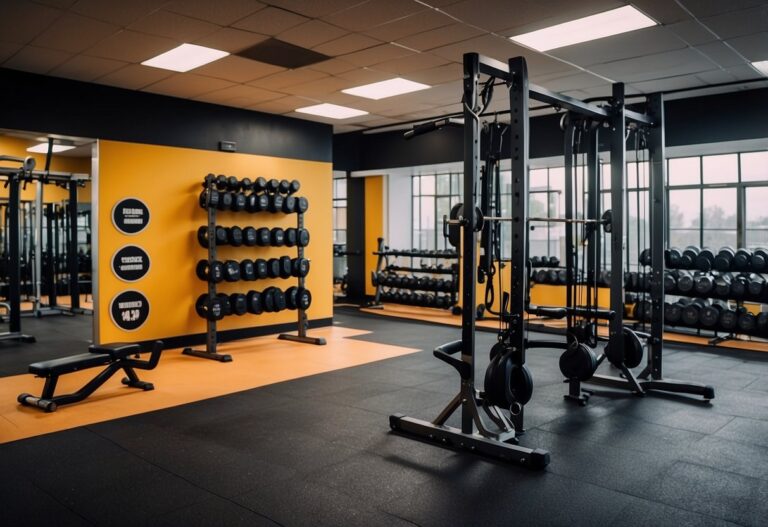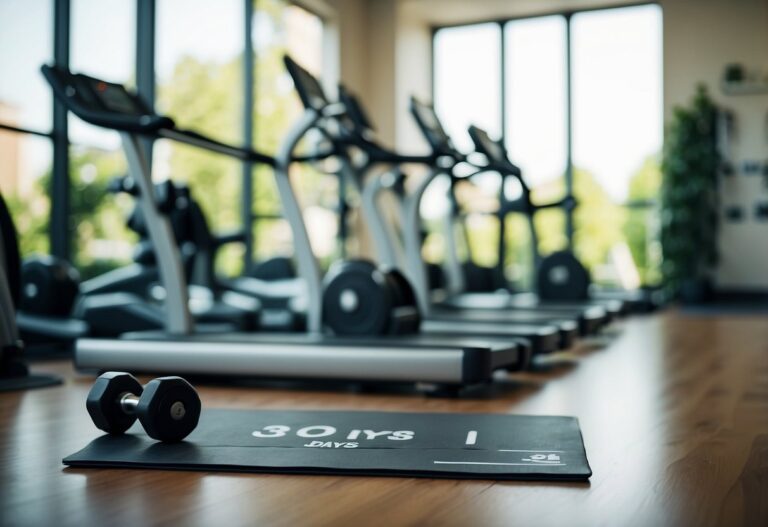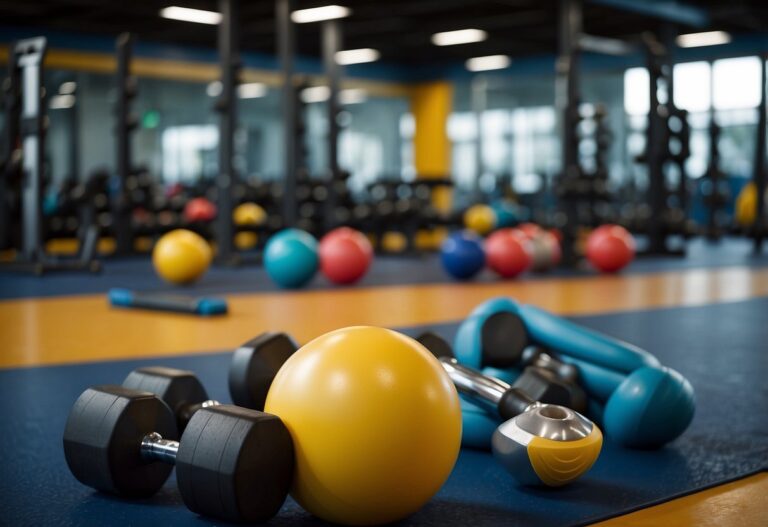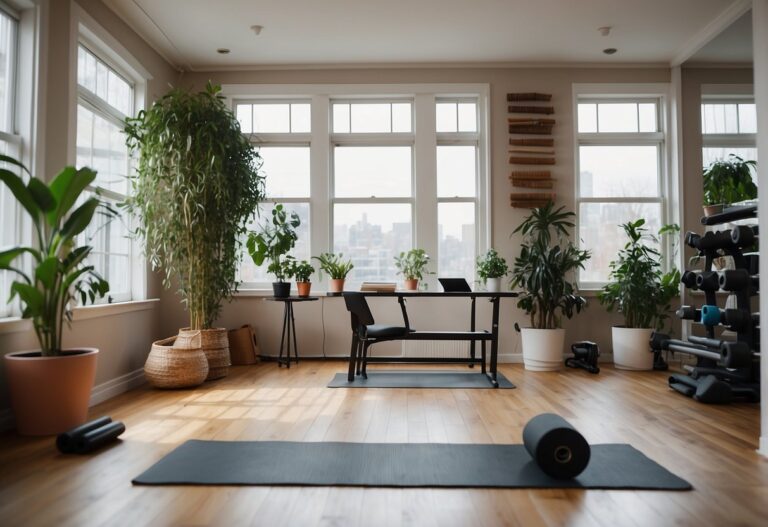Thinking about starting a stationary bike workout? It’s a fantastic choice to improve your fitness from the comfort of your home. Whether you’re new to cycling or looking to switch up your routine, it’s important to have some helpful tips to get the most out of your workouts.

What can a stationary bike workout do for you? It can help improve cardiovascular health, build muscle, and support weight loss goals. Plus, it’s a low-impact exercise, which means it’s gentle on your joints. With these advantages, using a stationary bike can be an enjoyable and effective way to stay active.
Warm up properly
Warming up is essential before you start your stationary bike workout. It prepares your body and helps prevent injuries. Begin by doing a few dynamic stretches off the bike. This gets your blood flowing and loosens up the muscles.
Next, hop on the bike and pedal at an easy pace for about five minutes. This gradual increase in intensity lets your body adjust to the workout.
Incorporating these steps not only makes your workout safer but also more effective. Plus, you might find it helps you enjoy the ride more.
Set Realistic Goals
Setting realistic goals is key to any workout plan.
Begin by thinking about what you want to achieve. Do you aim to improve your endurance, lose weight, or just stay active?
Next, consider your current fitness level. If you’re new to stationary biking, start with shorter sessions and gradually increase the intensity.
Break your goals into smaller, achievable steps. For example, if you want to cycle for 30 minutes, start with 10-minute sessions.
Use a 12-week workout plan to guide your progress step-by-step. This helps keep you focused and motivated.
Monitor your heart rate
Keeping an eye on your heart rate during your stationary bike workout is key. Why? It helps you stay in the right training zone.
First, find out your maximum heart rate. One way to do this is by starting at a quick pace and gradually increasing speed. When you can’t go faster, check your heart rate immediately.
By tracking your heart rate, you can ensure you’re in the right zone. For example, Zone 1 (60-64% of THR) is great for warming up.
Using a heart rate monitor or a smart watch makes it simple. These devices provide real-time data, so you know when to speed up or slow down.
Use Interval Training
Interval training is great for getting the most out of your stationary bike workouts. It involves short bursts of intense exercise followed by periods of lower intensity. This not only helps burn more calories but also improves your overall fitness.
Start with a warm-up of light pedalling for five minutes. Then, push yourself hard for 30 seconds, followed by a 90-second recovery period at a slower pace. Repeat this cycle five to ten times.
Adjust the intensity based on your fitness level. If you’re a beginner, you might start with a 1:2 ratio, like 30 seconds of effort and 60 seconds of rest. For more advanced cyclists, try a 1:1 ratio.
Adding variety keeps things interesting. You can change the resistance on the bike or try different intervals. This also helps in targeting different muscle groups and prevents workout boredom.
Incorporate interval training into your weekly routine. Aim for two to three sessions per week to see the best results. Remember to listen to your body and adjust the intensity as needed.
Focus on posture
When using a stationary bike, posture is crucial for both efficiency and safety. Start by adjusting the seat height. Your knee should be slightly bent at the bottom of the pedal stroke. This prevents strain on your knees and ensures a smooth ride.
Keep your back straight and avoid hunching over. A straight back helps you engage your core muscles and reduces the risk of back pain. Place your hands comfortably on the handlebars. Your elbows should be slightly bent, not locked, to absorb any shocks.
Remember to check your posture regularly during your workout. It’s easy to slip into bad habits, especially when you get tired. Keeping your posture in check can make your exercise routine more effective and enjoyable. For more tips on getting the most out of your workout, visit Verywell Fit’s guide.
Mix up your routines
To keep your stationary bike workouts exciting, try varying your routines. Change things up with different types of workouts. For example, integrate high-intensity interval training (HIIT) into your schedule. HIIT involves short, intense bursts of effort followed by a brief rest. This keeps your body guessing and can boost your fitness quickly.
Another idea is to incorporate endurance rides. These longer sessions help build stamina and burn calories. Aim for a steady pace that you can maintain over a longer period, such as 45 minutes. Changing the resistance levels can also mimic outdoor terrain and add variety.
You might also enjoy themed workouts. These can be anything from a virtual scenic ride to music-based intervals. Matching your pedalling to the beat can be a fun way to make time fly by. If you have a favourite playlist, use it to structure your session by increasing and decreasing your speed based on the song’s tempo.
Don’t forget to mix in some recovery rides. These low-intensity sessions are crucial for allowing your muscles to heal and preventing burnout. Even on rest days, a light 20-minute cycle at a gentle pace can help keep you on track with your fitness goals.
By introducing these various types of workouts, you keep things fresh and engaging. You’ll also be working different muscle groups and improving your cardiovascular fitness.
Stay Hydrated

When you’re working out on a stationary bike, keeping yourself hydrated is essential.
Start your workout with a full bottle of water within reach. Hydration can help maintain your energy levels and keep your muscles from cramping.
Take small sips regularly throughout your session. It’s important not to wait until you feel thirsty, as that can be a sign you’re already dehydrated.
In warmer conditions, consider an electrolyte drink to replace salts lost through sweat. Staying properly hydrated can significantly improve your performance and comfort on the bike.
Listen to Motivating Music

Playing motivating music while using your stationary bike can make a big difference in your workout. It helps you stay focused and push through tough intervals. You might find that upbeat tracks keep your energy high, especially during those challenging uphill simulations.
Try creating a playlist tailored to your exercise routine. Choose songs that have a good beat and make you feel pumped up. For instance, listen to tracks by artists like Calvin Harris or Lady Gaga. This can help you keep your pace steady and even make your workout feel shorter.
Music can also help improve your mood. When you listen to your favourite songs, you might feel more positive and motivated. This makes it easier to stay committed to your fitness goals.
Wear Proper Clothing
When riding a stationary bike, wearing the right clothing makes a big difference.
Pick comfortable workout gear that allows you to move freely. Avoid baggy clothes as they can get caught in the bike’s parts.
Proper footwear is crucial. Opt for sneakers with good support to prevent injuries and improve your pedalling efficiency.
If you tend to sweat a lot, consider moisture-wicking fabrics. These help keep you dry and comfortable throughout your workout.
Remember, dressing right can make your workout more enjoyable and effective.
Track your progress

Tracking your progress on a stationary bike helps keep you motivated. Use wearable devices like fitness trackers or smartwatches. They monitor your heart rate, distance, and calories burned. This way, you know when to step up your game.
Cycling apps connect to your bike through Bluetooth or ANT+. These apps track your speed, time, and cadence. Seeing your data helps you set new goals and stay committed to your fitness journey.
Monitoring your heart rate keeps you in the optimal training zone. For example, Zone 2 is great for building endurance. Always aim to stay within your target heart rate zones for the best results.
Use these tools to ensure you’re getting the most out of your workouts. Keep pushing your limits and enjoy the ride!
Importance of Warm-Up and Cool-Down
A proper warm-up and cool-down are crucial when using a stationary bike. They help prepare your body for exercise and aid recovery post-workout, reducing the risk of injury and muscle soreness.
Effective Warm-Up Techniques
Starting your ride with an effective warm-up is essential. Begin with 5-10 minutes of light cycling at a slow to moderate pace. This increases blood flow to your muscles and gradually raises your heart rate.
Consider adding dynamic stretches before you get on the bike. These can include leg swings, arm circles, and gentle lunges. Dynamic stretches help loosen up your joints and further prepare your muscles for the workout ahead. Remember to keep the movements controlled, focusing on the major muscle groups you’ll be using during your ride. By easing into your workout, you’ll be more prepared and perform better.
Cool-Down Stretches
After completing your ride, it’s important to cool down. Spend 5-10 minutes cycling at a slow pace to gradually lower your heart rate. Cooling down helps prevent blood from pooling in your legs, which can lead to dizziness or fainting.
Following your cool-down ride, incorporate some static stretching exercises. These can include quadriceps stretches, hamstring stretches, and calf stretches. Hold each stretch for 15-30 seconds without bouncing, ensuring you feel a gentle pull, not pain. Stretching helps relax the muscles, improve flexibility, and reduce muscle soreness. It’s a calming way to end your workout and take care of your body.
For more detailed guidance, you can refer to recommendations like those from 365Moves and Verywell Fit.
Setting Up Your Stationary Bike for Success
Proper setup of your stationary bike is key to an effective workout. Focusing on adjusting the seat and handlebars and maintaining correct riding posture will help you achieve the best results.
Adjusting the Seat and Handlebars
Start by positioning the seat at hip height. When you stand next to the bike, the saddle should be level with your hip bone. This makes sure your legs are extended properly during pedalling. Once you start riding, your knee should have a slight bend at the bottom of each pedal stroke.
Next, adjust the handlebars to a comfortable height. If you’re new to cycling, setting them higher can reduce strain on your back and neck. A lower handlebar height engages your core more, suitable for more intense workouts. Make sure the handlebars are close enough to reach without stretching, to avoid putting extra strain on your shoulders and back.
Correct Riding Posture
Maintaining the correct riding posture improves efficiency and prevents injuries. Sit on the widest part of the saddle and hinge forward at your hips. Your back should be straight but relaxed, and your shoulders should be down and not hunched.
Engage your core muscles to keep your body stable, which also helps to protect your lower back. Your knees should be aligned with your hips and feet to avoid putting unnecessary strain on your joints.
Keep a slight bend in your elbows and relax your grip on the handlebars. Too tight a grip can lead to tension in your shoulders and arms. Remember to keep your head up to maintain a natural curve in your spine.
By paying attention to these details, you can set up your bike efficiently and enjoy a comfortable, effective workout.
Designing an Effective Workout Plan

When creating an effective workout plan on a stationary bike, it’s important to focus on interval training and how to incorporate varying resistance levels. These elements can maximise the efficiency of your workouts and help achieve your fitness goals.
Interval Training Benefits
Interval training alternates between high-intensity bursts and low-intensity recovery periods. This type of workout can boost cardiovascular fitness and burn more calories in a shorter amount of time compared to steady-state cardio. For example, alternating between 2 minutes of intense pedalling and 1 minute of easy cycling can keep your heart rate up and improve endurance.
Using a stationary bike for interval training can also enhance fat loss. The high intensity bursts elevate your metabolism, causing you to burn more fat even after the workout is over. This is known as the “afterburn effect”.
Incorporating Resistance Levels
Adjusting the resistance levels on your stationary bike is key to building strength and improving muscle tone. Higher resistance levels mimic uphill cycling, which can target your glutes, hamstrings, and calves more effectively. Starting with a 5-minute warm-up at a low resistance, you can gradually increase the resistance for short intervals to challenge your muscles.
For instance, you might follow this pattern: 5 minutes at low resistance, 3 minutes at medium resistance, and 2 minutes at high resistance, then repeat. Verywell Fit suggests a cool-down period of lower resistance to help your body recover.
Incorporating both interval training and varying resistance levels can diversify your routine and prevent workout boredom. It can also better simulate outdoor cycling conditions, keeping your sessions interesting and effective.







